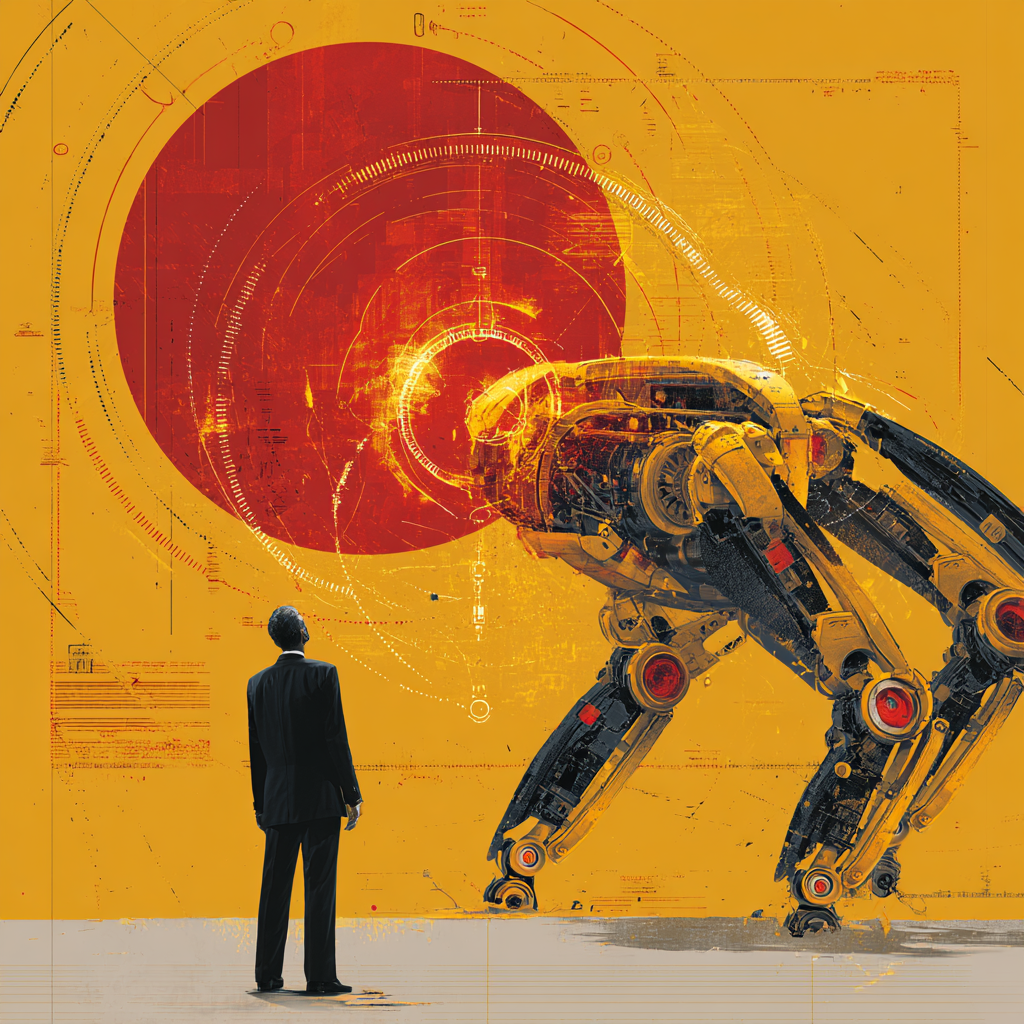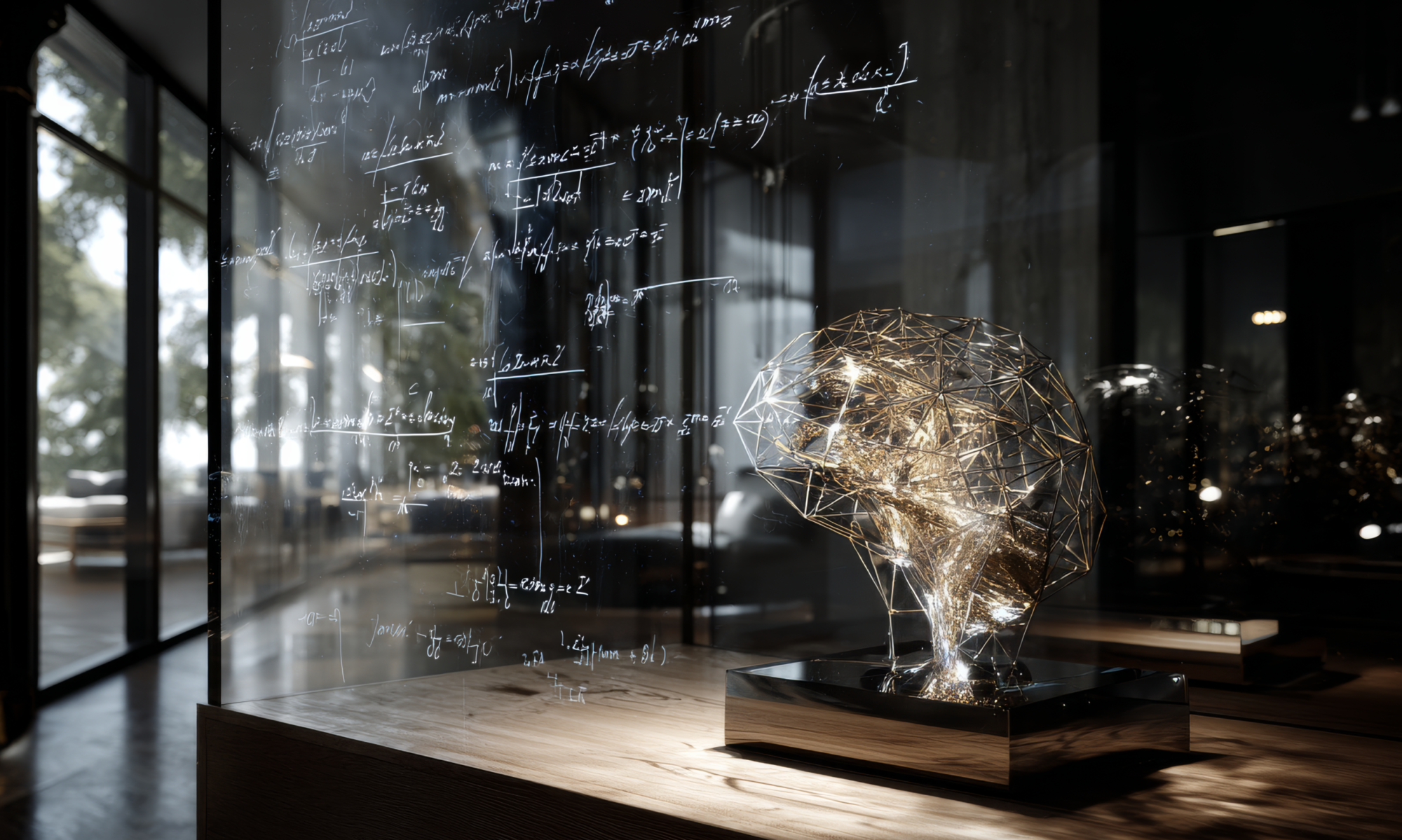
Estimated reading time: 14 – 16 minutes (≈ 3,100 words)
Why AI (and Any New Technology) Doesn’t Always “Save Time”—It Sets Your Ambition Free
1. The Five-Hour Render That Changed My Mindset (≈ 320 words)
Picture this: it’s 2 a.m., the luminescent glow of my monitor is the only light in the room, and a slow 3-D render bar inches forward like molasses. My trusty—but dated—GPU estimates five hours for a final pass. I sigh, hit “render,” and stagger off for a midnight snack.
Fast-forward six months: I install a new cutting-edge GPU with double the VRAM and triple the CUDA cores. I load up the same scene, hit render, and the estimate shrinks to a mere two hours. Victory! Except … that’s not what actually happened.
Instead, I stared at those extra gigabytes of memory, grinned like a kid in a candy shop, and thought, “Why not build an entire cyberpunk city instead of one lonely side street?” I piled on neon signs, volumetric fog, animated crowds—everything I’d previously skipped to stay under memory limits. My “two-hour” render ballooned to twelve delightful hours. I’d traded efficiency for ambition without a second thought.
That moment crystallized a universal truth:
When a bottleneck disappears, our imagination rushes in to fill the gap.
AI tools work the same way. Yes, GPT-4o can spit out a 1,000-word first draft in 30 seconds. But give a writer that power and they’ll ask for five alternate tones, three translation variants, and a rhyming version—because now they can. Instead of “saving time,” we often reinvest it into scope, not speed.
This blog post explores why faster tools lead to bigger dreams, how that applies to AI adoption, and—if you actually want to finish things on time—some sanity checks to keep you from drowning in creative possibility.
2. The Productivity Paradox—A Brief History (≈ 350 words)
Economists have debated versions of this phenomenon for 150 years. Three reference points:
- Jevons Paradox (1865): William Stanley Jevons noticed that as coal-burning engines became more fuel-efficient, overall coal consumption increased, because lower per-unit cost expanded industrial appetite.
- Parkinson’s Law (1955): British historian C. Northcote Parkinson quipped, “Work expands to fill the time available for its completion.” Even without new technology, humans naturally stretch tasks to fit the container provided.
- Brooks’s Law (1975): In software engineering, adding manpower to a late project often makes it later, because coordination overhead outweighs gained capacity. Replace “manpower” with “AI agents” and the principle still stings.
Key insight: Removing one constraint doesn’t shrink the overall effort; it often shifts the constraint elsewhere or invites new aspirations. Upgrading a laptop, hiring an intern, or adding AI copilots each creates slack—but humans instinctively convert slack into features, polish, or experiments.
Technology, therefore, doesn’t guarantee time-savings. It guarantees optionality. Whether that optionality translates to finished deliverables or an infinite backlog depends on how we manage ambition.
3. GPU Story, Unboxed: From 100 Objects to 1,000 (≈ 400 words)
Let’s dissect the render anecdote:
| Factor | Old GPU | New GPU | Human Response | Net Time |
|---|---|---|---|---|
| VRAM | 6 GB | 24 GB | “Add more geometry & 8K textures.” | ↓ initially, then ↑ |
| CUDA Cores | 2,048 | 10,240 | “Crank up ray-traced bounces.” | ↑ |
| Fan Noise | Jet engine | Whisper | “Leave overnight renders running every night.” | ↑ total hours |
Scope Inflation in Numbers
- Baseline scene (street corner, 100 objects)
- Old GPU: 5 h
- New GPU: 2 h
- Up-scoped scene (mega-city, 1,000 objects)
- Old GPU: Literally impossible (out-of-memory)
- New GPU: 12 h
Observation: The new GPU didn’t merely accelerate old work; it unlocked previously impossible work. That’s value—but not “saved time.”
Hidden Costs
- Iteration loops: More detail means more rendering passes to preview lighting tweaks.
- Asset management: Hundreds of extra textures balloon file sizes and backup times.
- Cognitive load: Choosing among endless HDRI maps or PBR materials demands decision time.
Parallel in AI
A code-generation model that once auto-wrote a CRUD API now also writes unit tests, integration tests, Terraform scripts, and a Swagger spec. Quality soars, but commit-review pipelines lengthen, and QA cycles grow.
The moral: Speed invites aspiration; aspiration extends timelines.
4. Example #1: Digital Photography—Spray-and-Pray Meets Editing Hell (≈ 350 words)
Remember early 2000s point-and-shoot cameras? With 256 MB cards, you snapped 80 photos on vacation, then picked 10 winners for a photo book. Enter modern mirrorless cameras with 30 fps burst rates and 1-TB cards:
- Shooting Phase
- Old tech: “Make every shot count.”
- New tech: “Hold the shutter—let’s get 800 images of that seagull!”
- Culling & Editing
- Old tech: 10 picks × 2 minutes per edit = 20 minutes.
- New tech: 150 picks × 3 minutes (RAW adjustments) = 450 minutes.
- Sharing
- Old tech: One Flickr album.
- New tech: Separate Lightroom galleries, Instagram reels, AI-generated timelapses.
Net result: End-to-end workflow time explodes despite faster autofocus, instant previews, and AI subject detection.
This resonates with AI writing tools: auto-generated drafts yield more versions to curate. Each “quick” rewrite invites re-reads, nuance tweaks, and A/B tests—social-media captions balloon from one tagline to twenty.
5. Example #2: The Kitchen Arms Race—Instant Pots and Gourmet Ambitions (≈ 320 words)
A non-tech analogy for the home chefs:
| Tool | Promise | Reality |
|---|---|---|
| Slow cooker | “Set it and forget it.” | 8-hour chili, low fuss. |
| Instant Pot | “Same chili in 45 minutes!” | Great—so you now attempt Korean short ribs, yogurt, sous-vide eggs, bone broth… often simultaneously. |
| Air fryer add-on | “Fast crispy finishing.” | Combines with Instant Pot for multi-stage recipes; cleanup doubles. |
Households find dinner starts quicker, but overall kitchen time grows due to recipe complexity, ingredient prep, and learning curves. The gadget eliminates simmer time, but ambition commands: “Let’s host a tapas party!”
That mirrors AI-assisted marketing: Generate a campaign in minutes, then decide to localize it into seven languages, personalize by persona, and A/B test subject lines. Campaign complexity skyrockets—so does workload.
6. Example #3: Power Tools & DIY—Bigger Decks, Longer Weekends (≈ 300 words)
Imagine Joe Homeowner with a hand saw building a 4 × 8 ft planter box. It takes a Saturday. He splurges on a sliding compound miter saw and a nail gun:
- Planter evolves into a 10 × 20 ft deck with built-in benches.
- Trips to the lumber yard triple; design time on SketchUp expands.
- Weekend becomes month-long saga—YouTube rabbit holes included.
Power tools shaved seconds off each cut yet extended the project by weeks. AI adds similar “power tools” to knowledge work—vector databases for semantic search, RAG pipelines, voice cloning. Each unlock breeds a bigger product vision.
7. How AI Supercharges Ambition, Not Just Output (≈ 450 words)
1. Lower Skill Floor → More Projects
A marketer with no coding background can prompt GPT-4o to scaffold a web app. Suddenly, weekend side-projects multiply. Each one may still hit roadblocks—hosting, compliance, payment integration—stretching the calendar.
2. Higher Quality Ceiling → Perfectionism Creep
Designers iterate endlessly: “Generate 30 banner variants in four color palettes.” Good enough is replaced by best-in-class. Clients expect Pixar-level storyboards because AI made them cheap to draft.
3. Rapid Feedback Loops → Experimental Addiction
Instant answers seduce us into “one more tweak.” A data scientist runs AutoML; model AUC hits 0.92. What about feature crosses? Another run, another hour. The buffet never closes.
4. Parallelization → Coordination Overhead
AI agents can each write code or analyze logs. But integrating their outputs, resolving merge conflicts, and ensuring security multiplies human oversight.
Org-Level Ripple Effects
- Budget illusions: Managers assume AI halves man-hours, cut timelines, yet scope mushrooms invisibly.
- Culture shift: “Ship fast” becomes “Polish forever,” risking analysis paralysis.
- Competitive pressure: If your rival adds 100 quirk-free micro-features via AI, customers expect parity.
Bottom line: AI accelerates imagination first and throughput second. To capture value, we must discipline where that imagination flows.
8. When AI Does Truly Save Time (and Why) (≈ 300 words)
Not all tasks succumb to scope-creep. AI excels at fixed-spec, high-volume chores:
| Domain | Why Scope Is Fixed | AI Edge | Time Truly Saved |
|---|---|---|---|
| Payroll & Tax filings | Legal forms rigid | OCR + validation models | Days per quarter |
| Spam filtering | Binary classification goal | Continual ML retraining | Manual review hours |
| Transcription of call center audio | Word-for-word requirement | Speech-to-text pipelines | Real-time captions |
| Data deduplication | Clear match criteria | Vector similarity search | Overnight SQL jobs |
Common thread: External rules (law, compliance, SLA) constrain ambition, preventing “let’s double scope” temptations. The task’s definition, not the tool, governs effort.
9. Five Practical Guardrails Against Scope Creep (≈ 450 words)
- Declare “Definition of Done” Upfront
- Write a checklist before you open ChatGPT or Midjourney. E.g., “Three hero images, 600 × 400 px, no animation.” Stick to it unless new business value arises.
- Time-Box Ideation
- Use the Pomodoro technique: 25 minutes for prompt tinkering, 5 minutes break. After four cycles, freeze further prompts and start editing.
- Separate Discovery from Delivery
- Run blue-sky AI explorations in discovery sprints where timelines are flexible. During delivery sprints, prohibit scope changes without stakeholder sign-off.
- Automate Guardrails
- Continuous Integration checks: lint prompts for forbidden PII, enforce size limits on generated images, count lines of AI-written code to flag review load.
- Measure Value, Not Volume
- Dashboards should track customer impact (conversion rate, NPS) rather than raw artifact counts (# of AI generations). Reward teams for results, not output quantity.
Applied diligently, these habits keep AI a productivity boon rather than an all-you-can-eat buffet of unfinished ideas.
10. Closing Thoughts: Value Over Velocity (≈ 300 words)
Technology’s greatest gift is possibility, not time. My newer GPU empowered digital cityscapes impossible on older hardware. AI endows solo entrepreneurs with marketing muscle once reserved for Fortune 500 giants. But these gifts carry a siren song: bigger scope, endless iterations, and the seductive illusion that because we can, we must.
The question isn’t whether AI “saves” time. It’s whether the extra time we invest produces disproportionately higher value. Sometimes the answer is a resounding yes—an intricate 3-D city shot lands a blockbuster film contract, a hyper-personalized email campaign doubles revenue. Other times, we’re polishing pixels no one will ever zoom to admire.
So, the next time you fire up ChatGPT, Midjourney, or your brand-new RTX Titan, pause:
- What outcome matters?
- What’s “good enough” to deliver that outcome?
- How will I know when to stop?
Honor those guardrails, and your faster tools will make you not just busier, but better. Ignore them, and you may find yourself at 2 a.m. again—watching a progress bar crawl while your grander-than-ever creation renders, wondering where all that “saved time” went.
